Cerge M. Remonde: From ‘probinsyano’ beat reporter to Cabinet secretary
Passage
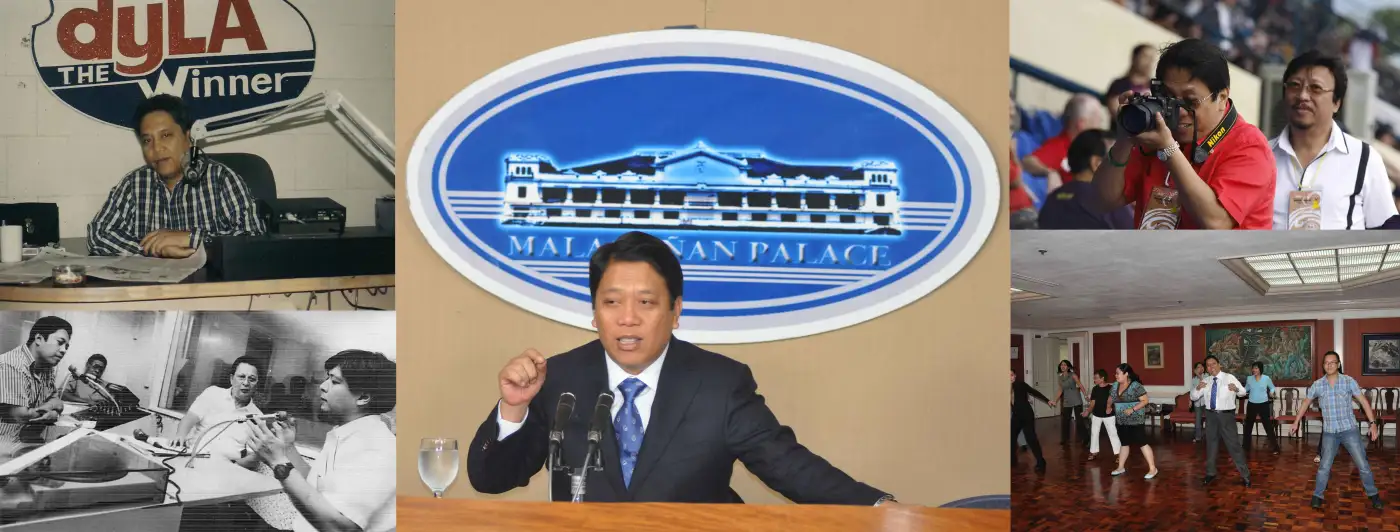
Cerge M. Remonde: From ‘probinsyano’ beat reporter to Cabinet secretary
KARLON RAMA
Jan. 9, 2019
He spoke truth to power as a newspaper columnist and radio commentator. But in a reversal of roles, Remonde defended power as press secretary to then president Gloria Macapagal-Arroyo who, to some observers, was the most unpopular president after Ferdinand Marcos Sr. Before his death, Remonde was frustrated that his former colleagues did not believe in the government whose messages he communicated.
LOCAL journalists who weren’t yet walking the beat in 2010 won’t know or, more likely, will only ‘know of’ Cerge Mamites Remonde, born Glecerio on Dec. 21, 1958 in Lamacan, Argao, Cebu.
Working the search engine will lead to two categories of stories.
The first involves journalism: he was a veteran broadcaster and columnist, he co-founded the original Sugbuanong Komentaristang Nagpakabana, he became six-time national chairman of the Kapisanan ng mga Brodkaster ng Pilipinas (KBP), etc.
The second, his later work in government: he was press undersecretary and later press secretary, he was boss to all government media, he was the longest-sitting member of the Arroyo cabinet, etc.
But plain reading will only reduce Cerge into someone who spoke truth to power and who then spoke in behalf of someone in power; the most unpopular president in the history of Philippine presidency, according to some.
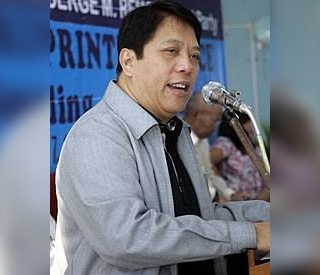
Cerge M. Remonde’s early jobs in media included stringing for the Philippine News Agency and anchoring radio DYLA’s primetime public affairs and commentary program ”Interaction.”
Five journalists weigh in on the story of Cerge.

Trivia. Remonde took his oath as Press Secretary twice. The first was official. The second was in March 13, 2009, when then president Arroyo was in Cebu to speak at the Asia Pacific Convention of Kiwanis International. Marit was then Kiwanis Club’s Philippine South District governor. Photo from PNA.
And of the five, Marit Stinus-Cabugon knew him most intimately even if she did not know him the longest. They were married until his death in Jan. 19, 2010.
“If not for Cerge and his being a journalist, I would never have become one myself,” she said in an interview a day before what would have been Cerge’s 61st birthday. Marit now writes a column for the Manila Times.
“Cerge helped province-based broadcast media get a bigger voice within the KBP which, until he got elected in 1996, had been dominated by the big Metro Manila-based networks,” she said.
“As the first province-based manager to be elected chairman, Cerge had an ear for the concerns of the small provincial networks,” she added. Under his watch, the KBP became more inclusive to people from the local chapters in the Visayas and Mindanao.
And if Marit knew Cerge most intimately, Bobby Nalzaro knew him the longest.
Gnarled veteran
“Cerge was one of my few friends in Cebu media when I transferred here from Zamboanga City in 1987. Though, I was with Bombo Radyo and he was the GM of DYLA, we became close,” Nalzaro, now a radio executive, television personality, and newspaper columnist, said.
“The best in him as a journalist was his ability and willingness to teach his reporters, editors and program hosts.”
Station affiliations, stresses Nalzaro, meant nothing to Cerge. This was particularly evident when he gathered competing radio commentators and organized them under one banner, the Sugbuanong Komentaristang Nagpakabana in the 90s.

“When he became the Press Secretary, we seldom saw each other. But whenever he was in Cebu, he always had me come over. In one occasion, I visited him in Malacañang and he toured me around.” — Bobby G. Nalzaro. Photo from Sun.Star Cebu.
“He was the president and I was the secretary,” Nalzaro said.
This was also evident when he stood up for local journalists when they got harassed by sources.
And Nalzaro was among those Remonde stood up for, said former Cebu broadcaster and news reporter Junhan Todiño, who now reports for the Marianas Variety in Saipan.
Todiño recalled one coverage following the devastation caused by Typhoon Ruping, which hit Cebu on Nov. 13, 1990, and caused a foreign ship, the MV Sanko Elegance, to careen into one of the posts of the Mactan-Mandaue bridge, then the only link between Mactan Island and the mainland, damaging it.
The bridge became impassable to road-based traffic and an influential family, who operated a barge service between Mandaue and the island, began charging exorbitant fees.
Nalzaro exposed the usurious fees and, while doing a followup with Todiño, got mauled by the family’s employees. Remonde was among the first to call out authorities and demand action.

Junhan Todiño was a neophyte reporter for DYMF Bombo Radyo Cebu when first met Cerge. He later joined print media. He now reports from Saipan. Photo contributed.
“As a neophyte reporter then, that incident could have weakened my passion for reporting had his peculiar instinct to comfort a person in need not been ardently displayed,” Todiño said.
Other broadcasters joined the call for accountability and the need to protect journalists. This solidarity later led to then Sun.Star Daily editor-in-chief Pachico A. Seares creating the Cebu Council of Media Leaders, which gave birth to the Cebu Press Freedom Week celebration that is still being held in Cebu every November.
Meanwhile, Jun Tagalog, former station manager of DYLA, trained under Cerge Remonde back in the day.
“The best in him as a journalist was his ability and willingness to teach his reporters, editors and program hosts,” Tagalog said.
Jhunnex Napallacan, the present DYLA station manager, agreed.
“As a journalist, he was very perfectionist and strict in terms of details. He always called our attention once he detected error or mistakes in our news stories,” he said. “But once he likes our outputs, he made it sure to extend his admiration.”

Turncoat?
So what makes a gnarled veteran of the craft leave all that behind and do public relations? A firm belief that what he was doing was necessary and correct.
Though he called out public officials for malfeasance, misfeasance and nonfeasance, Cerge was always right-wing in his ideology. His earlier years in broadcasting, for example, was dedicated to fighting pro-communist propaganda.
In fact, a 1992 paper authored by Ronald J. May, of the University of Hawai’i and Manoa’s Center for for Philippine Studies, credit Cerge as founder of the Philippine Alliance Against Communism.
His ideology was right-wing. Even a journalist in Cebu, he was already responding to the the pro-communist propaganda. He organized and led an anti-com group in Cebu.
The paper is entitled Vigilantes in the Philippines: From Fanatical Cults to Citizens’ Organizations.
A separate 2010 publication — entitled AFL-CIO’s Secret War against Developing Country Workers: Solidarity or Sabotage and authored by Kim Scipes, Ph.D of Purdue University Northwest — mentions Cerge as a “key person” within the Associated Labor Union (ALU), being the head of its “education department.”
Utilizing known labor leader Winnie Badayos of the rival Kilusang Mayo Uno (KMU) as source, Scipes’s paper even said Cerge, sometime from the mid to late ‘80s, was not only broadcasting on the union-owned station DYLA, but also “forming vigilante unions in all the local factories organized by ALU.”
His peers did not mention this side of the veteran broadcaster.
“He knew how to deal with the media because he came from their ranks.” The community press, often minimized by Palace communicators in the past, was recognized as a force in the government’s information program.
Stresses widow Marit: “He was one of the best Press Secretaries we ever had in the Philippines.”
“Being an experienced journalist from the mainstream media, he was very effective. He knew how to deal with the media because he came from the ranks,” seconds Nalzaro.
Napallacan compares Cerge to the more current Presidential mouthpieces — Martin Andanar, Harry Roque, Salvador Panelo — and gives the late broadcaster the highest marks.
“Even the opposition people respected him,” Napallacan retorts.
And the fact that Cerge was press secretary to then president Gloria Macapagal Arroyo, whom Marit describes as “the most unpopular President we ever had since the late President Ferdinand E. Marcos” says a lot.
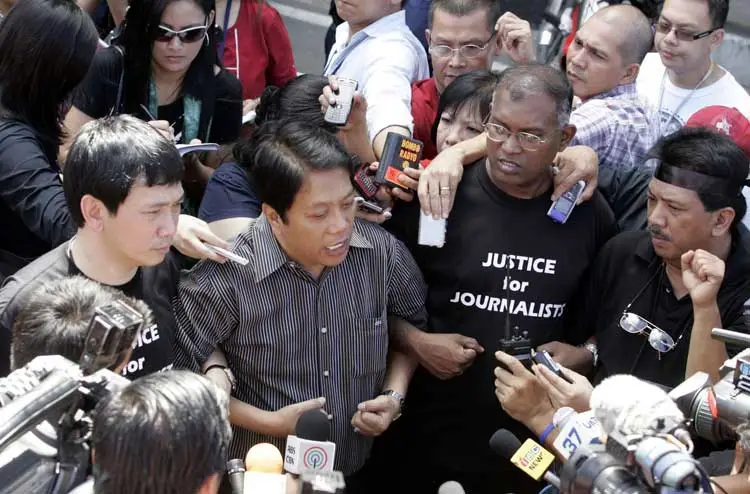
At a rally to protest media killings, held one week after the Nov. 23, 2009 Maguindanao massacre, Cerge Remonde faces his erstwhile peers to convey the Arroyo government’s resolve to “immediately address” media killings and impunity. Photo from PNA.
Unlike many press secretaries, Cerge got along well with media practitioners. Like most press secretaries, he was disappointed that the coverage focused on the president’s failures and not the successes. He wanted media to look more at GMA’s infrastructures. Media gave more attention to the scandals and the alleged corruption.
Cerge’s service to government — communicating the government’s thrusts and its successes — went beyond performing a function. He truly believed in his government. And it frustrated him no end that a lot, especially his own ilk in the media, didn’t. So much so that Marit, interviewed one day after Cerge’s death in January 19 2010, noted how the broadcaster had not been his usual jolly self for sometime and had often complained that his erstwhile peers wasn’t reporting the government right. “No matter how much he explains it, it gets twisted,” she conveyed Cerge’s lament in a report carried by the Manila Bulletin. In his last column to that newspaper, Cerge even said as much. The piece was entitled “Just Look Around You” and it challenged people looking for evidence of the Arroyo leadership to do as much.
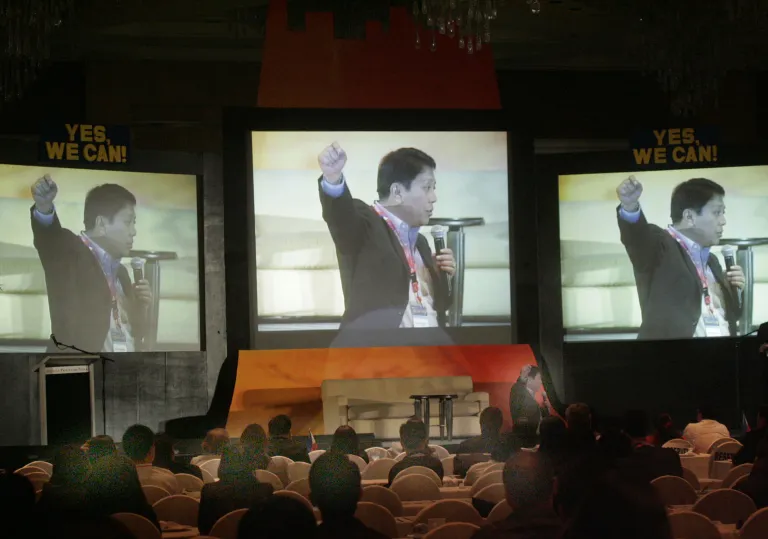
Remonde addresses attendees to the 40th National convention of the Philippine Marketing Association in this 2009 photo. He was a former head of the Advertising Board of the Philippines. Photo from Marit Stinus-Cabugon.
“For no leader in our history could compare with her achievements when it comes to the building of infrastructures of growth,” he said. While the media reported survey results and Arroyo’s declining trust ratings, Cerge tried to point out how Gloria built more roads, more bridges, opened more air and sea ports, and generated more jobs, than the last three presidents that came before her combined. “I bring up the point to illustrate how this administration must endure unfair criticism at every turn,” he said. So how should one Cerge M. Remonde be remembered? Gnarled broadcast journalism veteran who stood for his peers and demanded that the public be served, or government functionary who steadfastly defended an unpopular president? His peers choose to remember him as an extraordinary gentlemen who did what he felt needed doing and did it as best he could.
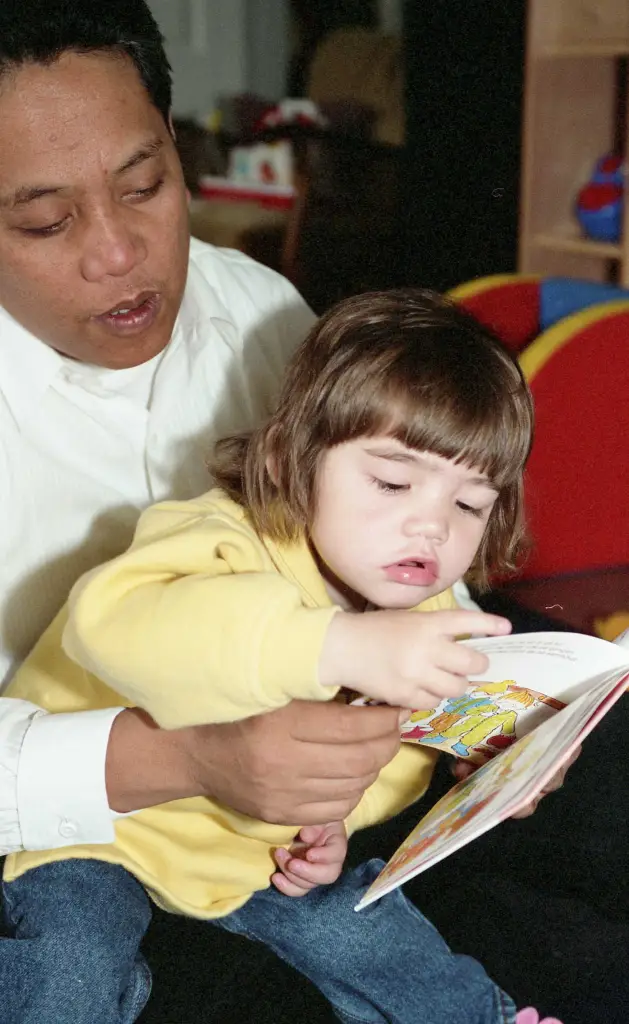
Cerge in a family photo. He had no children of his own.
Marit, though, shares a story about two gifts her late husband had — listening and empathy and, when he fails in both, faking it.
“One of my fondest memories of Cerge is from 1999, when we were in Denmark, and my two-year old niece climbed up on Cerge’s lap with one of her favorite story books and asked him in Danish to read it. Cerge of course didn’t know Danish,” she said.
“My niece started narrating the story – she knew it by heart – and with Cerge uttering an occasional ‘yah’. They finished the book and my niece never noticed that Cerge neither spoke nor understood Danish,” she added. 
